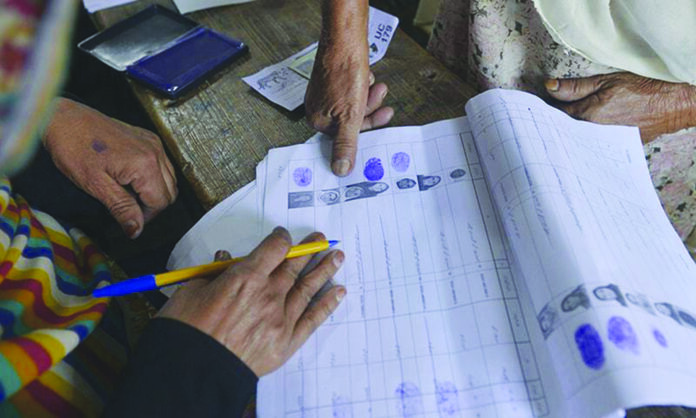In the intricate tapestry of Pakistan’s democratic journey, the evolution of voter turnout emerges as a pivotal narrative. From the exuberant 63 percent participation in the landmark 1970 elections to the nuanced fluctuations in subsequent polls, the quest to inspire citizens to exercise their voting right remains a pressing challenge. The ebb and flow of participation rates reached a nadir at 36 percent in 1997, and despite subsequent improvements, the 2018 turnout, while exceeding 51 percent, fell short of the 2013 figure.
Amidst these statistics lies a poignant issue— the lack of comprehensive awareness about the significance of voting, citizens’ rights, and civic duties. This critical gap, particularly pronounced in rural areas, has prompted an urgent need for intervention.
Understanding the Rural-Urban Divide
A visit to a remote village in Sindh during local elections unveiled a microcosm of the larger challenge. While the 800 registered female voters displayed a commendable turnout, a closer inspection revealed a disheartening reality. Nearly half of the cast votes were invalidated due to various issues, exposing the acute need for educational initiatives surrounding the voting process. Common mistakes, such as misplaced thumbprints instead of stamps, multiple stamps at different places, and ballot papers left blank, underscored the urgency of educational campaigns.
Global Perspectives on Voting
To understand the gravity of Pakistan’s low voter turnout, a glance at global voting indexes is illuminating. The average global voter turnout hovers around 75 percent, a stark contrast to Pakistan’s struggle to achieve a similar level of participation. As a nation that aspires to uphold democratic ideals, addressing this discrepancy should be paramount.
Pakistan stands at a pivotal juncture, where addressing the issue of low voter turnout is not only a matter of electoral concern but a fundamental aspect of fortifying its democratic foundation.
Educational Campaigns
One of the primary catalysts for change lies in extensive and sustained educational campaigns. These initiatives should transcend urban boundaries and reach the heart of rural communities. The objective is not merely to convey procedural information but to underscore the profound impact each vote carries in shaping the nation’s trajectory.
Accessible Information Platforms
Leveraging technology offers a potent solution. Establishing online platforms, mobile applications, and community-driven initiatives can democratize access to information. By disseminating knowledge on the voting process, candidates, and the broader democratic landscape, citizens can make informed choices.
Civic Education in Schools
The journey towards a participatory democracy begins in classrooms. Integrating comprehensive civic education into school curricula equips young minds with the understanding of their role in the democratic process. By instilling civic responsibility, these educational efforts ensure a more informed and engaged electorate in the future.
Community Workshops
The heart of rural communities lies in local leaders and influencers. Conducting workshops and community outreach programs, in collaboration with these figures, serves a dual purpose. It demystifies the voting process while fostering a sense of civic duty. Community-driven initiatives are often more impactful in breaking down barriers to participation.
Election Day Assistance Centres:
On election day, assistance centres can serve as invaluable resources. Whether in urban or rural areas, these centres provide on-the-spot guidance to voters, minimizing procedural errors and ensuring that every vote counts. They become beacons of support, reinforcing the accessibility of the democratic process.
Importance of Voting
While procedural improvements are crucial, emphasizing the importance of voting transcends mere mechanics. Launching media campaigns, community discussions, and seminars to underscore how every individual’s participation contributes to a stronger, more representative democracy is paramount. This narrative should be ingrained in the national psyche, making it a collective responsibility.
Inclusivity Slogans
Catchy slogans such as “No Voter Left Behind” need to resonate across various media platforms. By involving community organizations, stakeholders, and influencers, these slogans become rallying cries for a collective responsibility to maximize voter turnout.
Elections Act 2017
The Elections Act 2017 provides a detailed framework regarding the right to vote and the electoral process. However, the effective implementation of this legislation requires a concerted effort to bridge the gap between legal provisions and public understanding. Public awareness campaigns should highlight the safeguards and opportunities this act provides for citizens to participate in the democratic process.
Pakistan stands at a pivotal juncture, where addressing the issue of low voter turnout is not only a matter of electoral concern but a fundamental aspect of fortifying its democratic foundation. By implementing these proactive measures, the government can lead the nation toward a more informed, engaged, and participatory electorate. In doing so, Pakistan not only nurtures its democratic ethos but also reinforces its commitment to a vibrant and representative democracy. The collective voice of the people, when heard through the ballot, becomes the symphony that resonates with the aspirations of a nation.





















